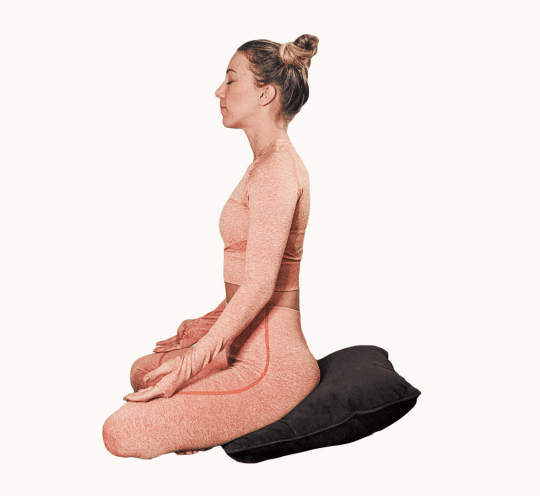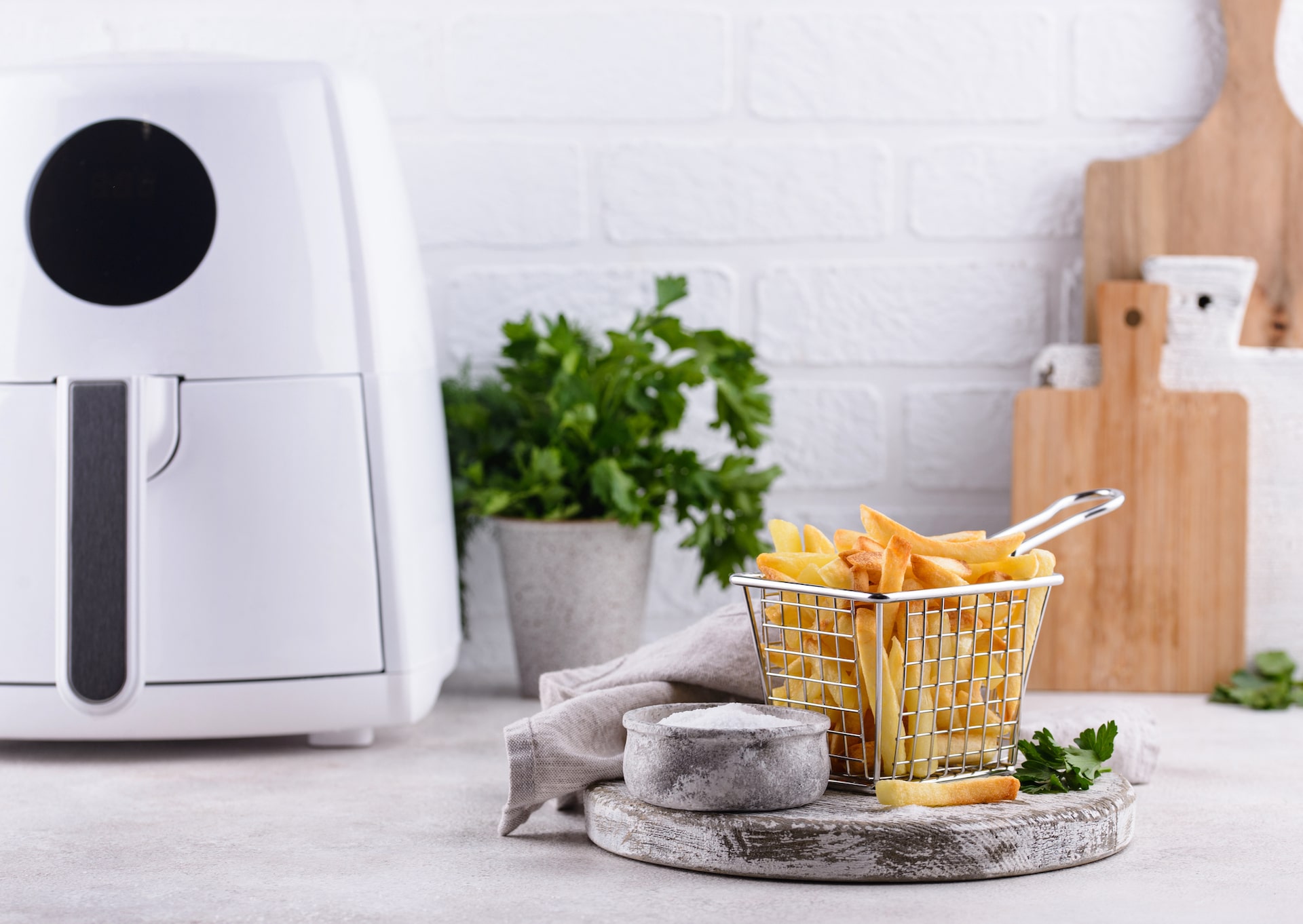This article may contain affiliate links. We may receive a commission for purchases made through these links. Privacy Policy.
It’s so easy to fall into the habit of starting your day by hitting the snooze to gain some extra z’s or by instantly grabbing your phone and starting the endless scroll. Unfortunately, neither is setting you up for success.
Dozing back off after your alarm typically results in you feeling more tired, and grabbing your phone, forget it. There goes your morning.
Starting your day with a short meditation can be a game-changer for your mental clarity, productivity, mood, patience, stress level, and more.
Let’s break down what meditation is, isn’t, and how you can easily implement it into your morning routine.
What is Meditation?

Meditation has become a bit of a buzzword these days, but if you are new to the concept, the idea of it can be overwhelming.
The most common misconception about practicing meditation is that the goal is to think of nothing. This is thankfully not the case, as our brains are wired to think all of the time. The key, however, is to foster awareness and compassion as our thoughts and feelings arise.
We like to define meditation as calmness, presence, and compassion.
Let’s look at what each of these embodies.
Calmness
- Being in a calm environment during your meditation supports the calming of your mind.
- Calmness results when you slow down your breath, and therefore, activate your body’s relaxation response.
- Your body position should be comfortable – if you are continually moving and adjusting, it is taking the calmness away from not only your physical body but your mind as well.
When we get comfortable being calm, both physically and mentally, we are more likely to apply this calmness to stressful situations that arise in our lives. When we start our day in this calm state, it can decrease our overall stress and anxiety levels for the day ahead.
This may look like us pausing before reacting or consciously deciding that we do not want to waste our energy by involving ourselves in situations that don’t support us.
Presence
- Awareness of your breath, your clothing on your skin, your thoughts, your emotions, the temperature of the room, the sounds in the room, and any body sensations are all fostering presence.
- Often, meditations will have you focus on your breath or encourage a visualization – staying present on this throughout your meditation is the goal.
- When your mind does wander, because it will, presence appears when you recognize your wandering thoughts and decide to bring your attention back to your breath or visualization.
When we strengthen our presence muscles, we can translate this presence into our everyday life.
You may be quicker to notice when your body is asking for a break or a massage. You may realize what foods make you feel light and energized versus heavy and sluggish. You may notice what situations trigger certain thoughts and feelings.
This awareness is a complete gift and, unfortunately, is overlooked in our busy, non-stop lives. Starting your day with a present mind will boost your mental focus and allow you to not only be tuned in to your needs, but enable you to be more productive!
Compassion
- There is no perfect meditation, and every meditation is going to be and feel different. Expect and embrace this with compassion for yourself.
- Meditation is a no-judgment zone. Your job is to witness your thoughts, feelings, and distractions as they arise, without expectation and without judgment.
Self-compassion may be the most important piece of the meditation puzzle. Without it, we can not fully reap the amazing benefits of daily meditation practice.
The more we practice self-compassion in our meditations, the more likely we can give ourselves a break when we overreact, skip a workout, or have an off day. We are imperfect, beautiful humans. Regular meditation will help you stop the judgment game!
How do I Create the Perfect Meditation Space?
So, you’re feeling this calm, present, and compassionate vibe and you’re ready to jump in. The most important place to start is finding (or creating) a meditation-worthy space.
Don’t worry. It doesn’t require much.
If you can check off all of these three, you are ready to meditate!
- Create a quiet space, free of distractions – this means no phone, no computer, no TV, no kids running around…you get it. The fewer distractions there are, the more present and relaxed you can be.
- Soft lighting – this encourages a relaxed and calm physical and mental state. If you know you can easily fall back to sleep, let in a little sunlight or turn on a light.
- Find a comfortable position – this assures that you can experience our magic three: calmness, presence, and compassion. We suggest getting out of your bed and finding a position that you are comfortable in, but one that won’t put you back to sleep.
Meditation Positions
Here are some basic meditations you can try out for your morning routine.
SAVASANA

Lie on your back. Resting your arms comfortably by your sides.
SUPPORTED SAVASANA
Lie on your back with a pillow resting underneath your knees and your arms comfortably by your sides.
SUPTA BADDHA KONASANA

Lie on your back with the soles of your feet together and knees dropping open to each side.

SEATED ON A PILLOW

Sit cross-legged and make sure your hips are elevated on a pillow – ideally allowing your hips to be slightly higher than your knees.
KNEELING ON A PILLOW (HERO’S POSE)

Kneel with a pillow under your hips. Your feet may be under the pillow or wider than (outside of) the pillow.
LEGS UP THE WALL
Lie on your back with your legs up a wall. Hips should be near the wall for comfort; knees may be bent slightly.

How do I Meditate?
You have your space set up. Now what? Start small. Start simple. Follow these steps.
- Set a timer for 5 minutes.
- Close your eyes.
- Mentally scan your body and check in to how you feel in that moment, without judgment.
- Take 10 slow deep breaths.
- Remain in silence until the timer is up.
Your mind is going to wander. You are likely going to want to open your eyes and check to make sure the timer is working – because it feels like it’s been way over 5 minutes. This is normal.
Try to resist the urge to open your eyes. When you feel restless, bring your focus back to your breathing. You may deepen your breath again or simply witness your natural breath flowing in and out. You can do it.
When you feel comfortable with the above, here are a few optional variations:
- Increase your time to 7, 10, or 15 minutes.
- Play instrumental or relaxing music during your meditation.
- Try to sit or lay in a new position.
- Try a guided meditation.
Our favorite guided meditations can be found in this free 3-Day Mindful Reset Program or via apps like Headspace, Calm, and Insight Timer.
Now that you have the knowledge and tools, you can make your morning meditation routine a non-negotiable. Simply roll out of bed and onto your yoga mat or a pillow and be for at least 5 minutes before tackling your day.
We promise that if you stick to it, you will find that you wished you started this practice years ago.
How to start a morning meditation routine
- Understand that meditation is a combination of calmness, presence, and compassion.
- Create a distraction-free space with soft lighting.
- Make sure you are in a comfortable position.
- Set a timer for 5 minutes.
- Scan your body and check in to how you feel, without judgment.
- Take 10 slow, deep breaths.
- Remain in silence until the timer is up.
- Remember that your mind is like any other muscle, and it will get stronger with practice.
- Know that there is no right or wrong way to meditate. Every day will be different.
- Try out the Mindful Reset Program for guided meditations.
BoopBod
view postBoopBod
Emily and Beth are besties who head up Boopbod. They love kettlebell workouts, coffee runs, sweaty power vinyasa flows and loads of belly laughs. They create resources that elevate your mind, body and soul, allowing their squad to live out their version of "happy healthy."
view post








